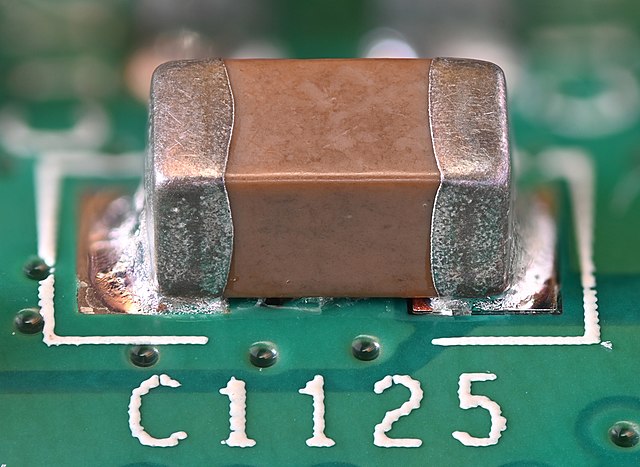A Leyden jar is an electrical component that stores a high-voltage electric charge between electrical conductors on the inside and outside of a glass jar. It typically consists of a glass jar with metal foil cemented to the inside and the outside surfaces, and a metal terminal projecting vertically through the jar lid to make contact with the inner foil. It was the original form of the capacitor.
A battery of four water-filled Leyden jars, Museum Boerhaave, Leiden
In electrical engineering, a capacitor is a device that stores electrical energy by accumulating electric charges on two closely spaced surfaces that are insulated from each other. The capacitor was originally known as the condenser, a term still encountered in a few compound names, such as the condenser microphone. It is a passive electronic component with two terminals.
Capacitor
Battery of four Leyden jars in Museum Boerhaave, Leiden, the Netherlands
A simple demonstration capacitor made of two parallel metal plates, using an air gap as the dielectric
A surface-mount capacitor. The plates, not visible, are layered horizontally between ceramic dielectric layers, and connect alternately to either end-cap, which are visible.




